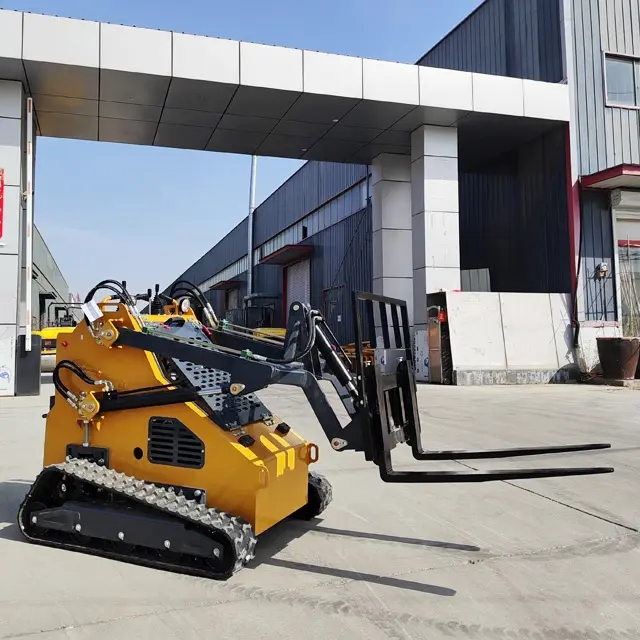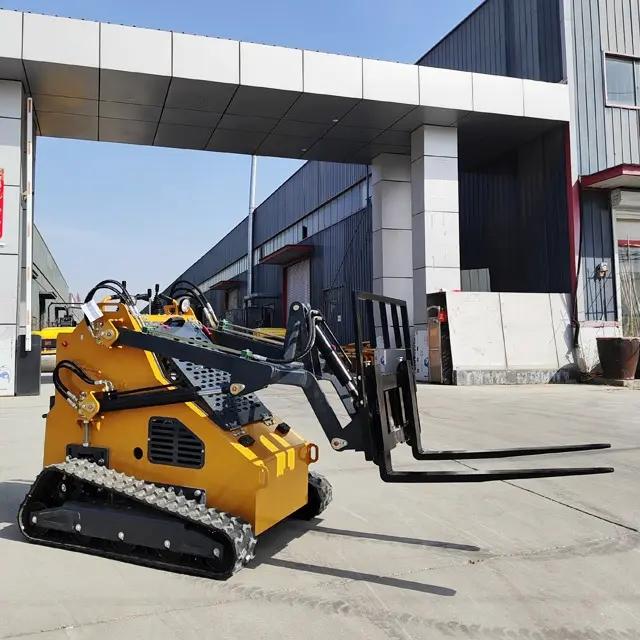Sliding loaders, often used in warehouses, manufacturing facilities, and distribution centers, are essential for efficient material handling. These machines, with their ability to move heavy loads smoothly along tracks, significantly enhance productivity. However, to ensure optimal performance and extend the lifespan of these loaders, regular maintenance and upkeep are crucial.

Daily Inspections
Performing daily inspections is the foundation of any maintenance program. It allows for early detection of potential issues before they escalate into costly repairs.
Visual Checks
Tracks and Rails: Inspect tracks and rails for any signs of wear, bending, or debris accumulation. Ensure they are aligned properly.
Wheels and Bearings: Check wheels for wear and bearings for lubrication. Look for any unusual noises or vibrations which could indicate bearing failure.
Safety Devices: Verify the functionality of all safety devices, such as emergency stops, sensors, and guards.
Power Supply and Controls: Inspect cables, connectors, and control panels for damage or wear. Ensure that all controls are responsive and labeled correctly.
Operational Tests
Load Handling: Test the loader's ability to handle its maximum load capacity safely and smoothly.
Brakes and Stops: Engage the brakes and check for any slipping or delayed engagement. Test all emergency stops to ensure they function as intended.
Operational Cycle: Run the loader through its complete operational cycle to observe overall performance and listen for any unusual sounds.
Regular Maintenance
Beyond daily inspections, a scheduled maintenance program is vital for the long-term health of your sliding loaders.
Lubrication
Moving Parts: Regularly lubricate wheels, bearings, tracks, and any other moving parts according to the manufacturer's recommendations. This reduces friction, wear, and the need for frequent repairs.
Grease Points: Identify and service all grease points, ensuring they are adequately greased to prevent dry running and premature failure.
Cleaning
Debris Removal: Regularly clean tracks, wheels, and undercarriages to remove dust, dirt, and debris that can cause wear and operational issues.
Electrical Components: Keep electrical components free of dust and debris to prevent overheating and short circuits. Use compressed air or a vacuum cleaner for delicate areas.
Adjustments and Tightening
Bolt Tightening: Periodically check and tighten all bolts and fasteners, especially those securing tracks, wheels, and structural components. Loose parts can lead to vibrations and accelerated wear.
Alignment: Ensure tracks and wheels are properly aligned. Misalignment can cause excessive wear and reduce the loader's efficiency.
Preventive Measures
Implementing preventive measures can significantly reduce the likelihood of unexpected breakdowns and extend the loader's lifespan.
Load Management
Load Distribution: Evenly distribute loads to avoid overloading any single component. Overloading can strain the system and lead to premature failure.
Handling Techniques: Train operators on proper loading and unloading techniques to minimize stress on the loader.
Environmental Considerations
Temperature Extremes: Protect loaders from exposure to extreme temperatures, which can affect the performance of lubricants, plastics, and electronics.
Humidity Control: High humidity can lead to corrosion and electrical issues. Ensure loaders are stored in dry, well-ventilated areas when not in use.
Operator Training
Safety Protocols: Provide comprehensive training on safety protocols, loader operation, and emergency procedures. Well-trained operators are less likely to cause accidental damage.
Maintenance Awareness: Educate operators on basic maintenance tasks and the importance of reporting any issues promptly.
Advanced Maintenance Techniques
For more complex issues or as part of a proactive maintenance strategy, consider the following advanced techniques.
Predictive Maintenance
Vibration Analysis: Use vibration sensors to detect early signs of wear or imbalance in moving parts.
Oil Analysis: Regularly analyze lubrication oil for contaminants, wear particles, and other indicators of potential problems.
Component Replacement
Wear Parts Inventory: Keep a stock of commonly worn parts, such as wheels, bearings, and track segments, to minimize downtime during repairs.
Scheduled Replacements: Implement a schedule for replacing wear parts based on usage and manufacturer recommendations.
Technical Upgrades
Automation Integration: Incorporate automation and sensor technology to enhance safety, efficiency, and monitoring capabilities.
Retrofits: Consider retrofitting older loaders with modern components to improve performance and reliability.
Conclusion
Maintaining and upkeeping sliding loaders is a critical aspect of ensuring efficient and safe material handling operations. By following a combination of daily inspections, regular maintenance, preventive measures, and advanced techniques, you can maximize the lifespan and performance of your loaders. Remember, a well-maintained loader is not only more reliable but also safer for operators and those around them. Investing in a robust maintenance program is an investment in the long-term success of your operations.
https://www.skidsteerpabreak.com/maintenance-and-upkeep-techniques-for-sliding-loaders.html

